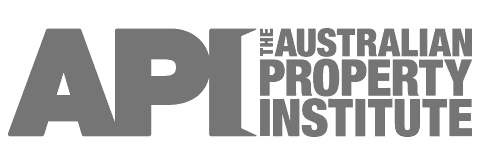Asset Valuation Definitions
Plant & Equipment Valuation NSW endeavours to make valuations easy for all our clients. So that things are easier for you we have collected, as well written up, some definitions of terms you may need to know. Valuations can be overwhelming to those that are unfamiliar with the process. Knowing these terms may help you understand the general asset valuation criteria and what you specifically require from a valuation so that it suits your situation.
Most of these definitions are sourced from the Australian Property Institute (API) and the International Valuation Glossary published by the Royal Institution of Chartered Surveyors (RICS). These institutions set the professional standards that our company abides by.
We’ve separated these definitions into three sections:
- Key Plant and Equipment Valuation Definitions: These are the top terms that are repeated on our site and by our specialists. Familiarising yourself with these terms is a good starting point for understanding the world of plant and equipment valuations.
- Value Definitions: There are many different types of values we can calculate for. Each one serves a particular purpose that can be useful for both you and your business.
- General Valuation Definitions: General terms you may come across when researching valuations of any sort.
Key Plant and Equipment Valuation Definitions
Plant and Equipment
Fixed (tangible) assets of a business. When using the term, plant and equipment, a valuer is referring to a business’ machinery, equipment, and appliances. This can include vehicles, tools, forklifts, cranes, and other such items.
Plant and Machinery
Another form of the term plant and equipment, meaning the tangible assets of a company. Often referring to items such as power tools, factory machinery, lifts and vehicles.
Property, Plant and Equipment
Tangible items that:
- are held for use in the production or supply of goods or services, for rental to others, or for administrative purposes; and
- are expected to be used during more than one period.
Valuer
A Service Provider with an appropriate professional qualification in valuation or appraisal.
Valuation
An established, ethical and evidence-based process for assessing the monetary value of an asset at a specified date, that is legally defensible and undertaken by a qualified, professional Valuer.
Property Valuer
A person that is licensed or registered to perform valuations of real property. For the valuers on our team this includes land and buildings.
Plant and Equipment Valuer
A qualified professional valuer with the specialised expertise, training, and certification to conduct valuations of plant and equipment.
Property, Plant and Machinery Valuer
A licensed professional with the skills and qualifications to undertake any valuation of property, plant and equipment.
P&E
An abbreviation of plant and equipment, commonly used by our valuers and clients.
PP&E
This is an abbreviation of Property, Plant and Equipment. This is commonly used by accountants and other finance professionals.
P&M
The abbreviated form of Plant and Machinery. Most often seen alongside the certification our valuers have from the Australian Property Institute.
Australian Property Institute
An organisation in Australia that sets and maintains the standards that our valuers adhere to. They lead the industry, and their members must meet their high standards for professional practice, education, ethics, and conduct.
API
The abbreviation of Australian Property Institute. An organisation that set the standards for leading valuation professionals.
Certified Practising Valuer
A certification provided by the API that an individual with eligible education, training and experienced may receive to state that they are highly qualified to perform valuations of real property.
CPV
An abbreviated form of Certified Practising Valuer. This certification can only be given to valuers that meet the API’s high standards of education, training, and experience.
Certified Practising Valuer (Plant and Machinery)
An API certification given to valuers that meet the institute’s criteria for a qualified professional valuer of plant and machinery.
Royal Institution of Chartered Surveyors
A globally recognised and respected professional body that promotes and enforces the highest professional standards in the valuation, development and management of land, real estate, construction, and infrastructure.
RICS
The abbreviation of the Royal Institution of Chartered Surveyors. A professional body that is recognised as setting the standards of professional valuers across the globe.
Value Definitions
Market Value
The estimated amount for which an asset or liability should exchange on the valuation date between a willing buyer and a willing seller in an arm’s length transaction, after proper marketing and where the parties had each acted knowledgeably, prudently and without compulsion.
Equity Value
Also known as Enterprise Value. The total market value of a whole business. This includes the value of its debt or debt-related liabilities, minus any cash or cash equivalents available to meet those liabilities.
Fair Market Value
A representation of the price, expressed in terms of cash equivalents, at which property would change hands between a hypothetical willing and able buyer and a hypothetical willing and able seller, each acting at arms-length in an open and unrestricted market, when neither is under compulsion to buy or to sell and when both have reasonable knowledge of relevant facts.
Fair Value
The price that would be received to sell an asset or paid to transfer a liability in an orderly transaction between market participants at the measurement date.
Forced Liquidation Value
A form of Liquidation Value in which an asset or assets are presumed to be sold with less than a reasonable period of market exposure. Contrast with Orderly Liquidation Value.
Going Concern Value
A Premise of Value that assumes the business is an ongoing commercial enterprise with a reasonable expectation of future earning power.
Investment Value
A Standard of Value considered to represent the value of an asset or business to a particular owner or prospective owner for individual investment or operational objectives. Also known as value to the owner.
Liquidation Value
The amount, net of relevant costs (e.g., preparation and disposal), that would be realised if the business is terminated, and the assets are sold. See also Orderly Liquidation Value and Forced Liquidation Value.
Market Rental Value
The amount a property should be rented between a willing lessor and a willing lessee in an arm’s length transaction at a certain date.
Net Asset Value
The difference between a business' total assets and liabilities restated at a particular Standard of Value rather than accounting book values.
Net Book Value
The difference between a business' total assets and liabilities at accounting book values (synonymous with book equity). With respect to a specific asset, this is the original capitalised cost less accumulated amortisation, depreciation, depletion, allowances, or impairment.
Orderly Liquidation Value
A form of Liquidation Value in which the asset or assets are presumed to be sold over a reasonable period of market exposure to maximise expected return. Contrast with Forced Liquidation Value.
Salvage Value
The value of an asset at the end of its economic life given the purpose for which the asset was created. The asset may still have value for an alternative use or for recycling.
Standalone Value
The value of an asset, business, or investment estimated without considerations of potential Synergies.
Synergistic Value
The expected value resulting from a combination of two or more assets or businesses, which is greater than the sum of the separate individual parts.
General Valuation Definitions
Appraisal
Another term for valuation. This is often associated with real estate agents, with some defining it as an informal form of valuation. However, that is not an official definition.
Arm’s Length
A term that refers to a transaction between two or more independent parties with no previous affiliation or relation. All parties are on equal footing.
Asset
A resource:
- controlled by an entity as a result of past events; and
- from which future economic benefits are expected to flow to equity.
Assets Register
A document that is a detailed list of an entity’s assets. It includes essential information about each asset, useful for keeping track and maintaining each asset.
Business
A commercial, industrial, service, or investment entity (or a combination thereof) pursuing an economic activity.
Business Combination
A transaction or other event in which an acquirer obtains control of one or more businesses. Transactions sometimes referred to as ‘true mergers’ or ‘mergers of equals’ are also business combinations as that term is used in this Standard.
Capitalisation Rate
A divisor (usually expressed as a percentage) used to convert into value the expected Economic Income of a normalised single period. The Capitalisation Rate is generally calculated as a Discount Rate less a long-term growth rate.
Cost
The amount of cash or cash equivalents paid or the fair value of the other consideration given to acquire an asset at the time of its acquisition or construction, or, when applicable, the amount attributed to that asset when initially recognised in accordance with the specific requirements of other Australian Accounting Standards, for example AASB 2 Share-based Payment.
Cost Approach
A valuation approach based on the economic principle that a buyer will pay no more for an asset than the cost to obtain an asset of equal utility, whether by purchase or by construction.
Depreciation
The systematic allocation of the depreciable amount of an asset over its useful life.
Desktop Assessment
A report prepared:
- by Valuers relying on specified documents and information; and
- that involves no physical inspection of the Subject Property; and
- that produces and Indicative Assessment of value of the Subject Property
Equity
The residual interest in the assets of the entity after deducting all its liabilities.
External Obsolescence
A loss of utility caused by economic or locational factors external to the assets that results in a loss of value.
Functional Obsolescence
A loss of utility resulting from inefficiencies in the subject asset compared to its replacement that results in a loss of value.
Goodwill
An Intangible Asset which represents any future economic benefit arising from a business or a group of assets which is not individually identified or separately recognised. Goodwill can arise as a result of name, reputation, customer loyalty, location, products, and similar factors not separately identified.
Gross Rent
The rental reserved or derived under lease or tenancy arrangement(s) where there is no further obligation on the tenant to pay any other property costs other than tenancy utilities and cleaning.
Highest and Best Use
The use of an asset that maximises its potential and that is physically possible, legally permissible and financially feasible.
Impairment
Loss of value of any asset. This reduction in value could be caused by a depreciation of quality, quantity or market value.
Income Approach
A valuation approach that provides an indication of value by converting future cash flows to a single current capital value.
Intangible Asset
An asset that lacks physical substance and derives value from the economic properties that grant rights and/or Economic Income to its owner (e.g., patents, copyrights, trademarks, or customer relationships).
Lease
An agreement whereby the lessor conveys to the lessee in return for a payment or series of payments the right to use an asset for an agreed period of time.
Lessee
A person who rents land or property. Commonly referred to as a tenant.
Lessor
A person who leases land or property to a tenant. They are the owner of the property. Also known as a Landlord.
Market Approach
A valuation approach which provides an indication of value by comparing the subject asset with identical or similar assets for which price information is available.
Modern Equivalent Asset
An asset that has been designed and produced using contemporary techniques and/or materials. The asset serves the same purpose or operates similarly to the asset that is being valued.
Obsolescence
Describes the state in which an asset is no longer maintained, required or in use despite being in good working order.
Rate of Return
An amount, expressed as a percentage of the amount of the investment, of anticipated or realised Economic Income and/or change in value of an investment.
Real Property
A lot of land and all that is attached to the land including structures, dwellings, improvements, and natural elements.
Replacement Cost
The current cost of a similar asset offering equivalent utility.
Rent Review
A periodic review of rental under a lease using a predetermined method.
Return on Investment
A ratio used to measure and evaluate the efficiency of an investment. Can also be used to compare the efficiency of multiple investments.
Tangible Asset
An asset that has physical form and derives value from its physical properties or tangible nature (e.g., real estate, property, plant, equipment). Contrast with Intangible Asset.
Technical Obsolescence
When a newer item or technology replaces an older asset that is functional and in good condition. The original asset or item can still serve its purpose, but the newer replacement is preferred, either for convenience, cost or maintenance purposes.
The Plant and Equipment Valuation Experts
The terms used for plant and equipment valuations can seem endless and perhaps daunting. Luckily, we have the experts that can explain the process in plain English so all can understand. If you would prefer to speak with a specialist to guide you through what a plant and equipment valuation is and what is involved, feel free to reach out. We are always happy to help and will gladly share our expertise.
To contact us you can fill out our online form or you can call us on (02) 9037 6380.





